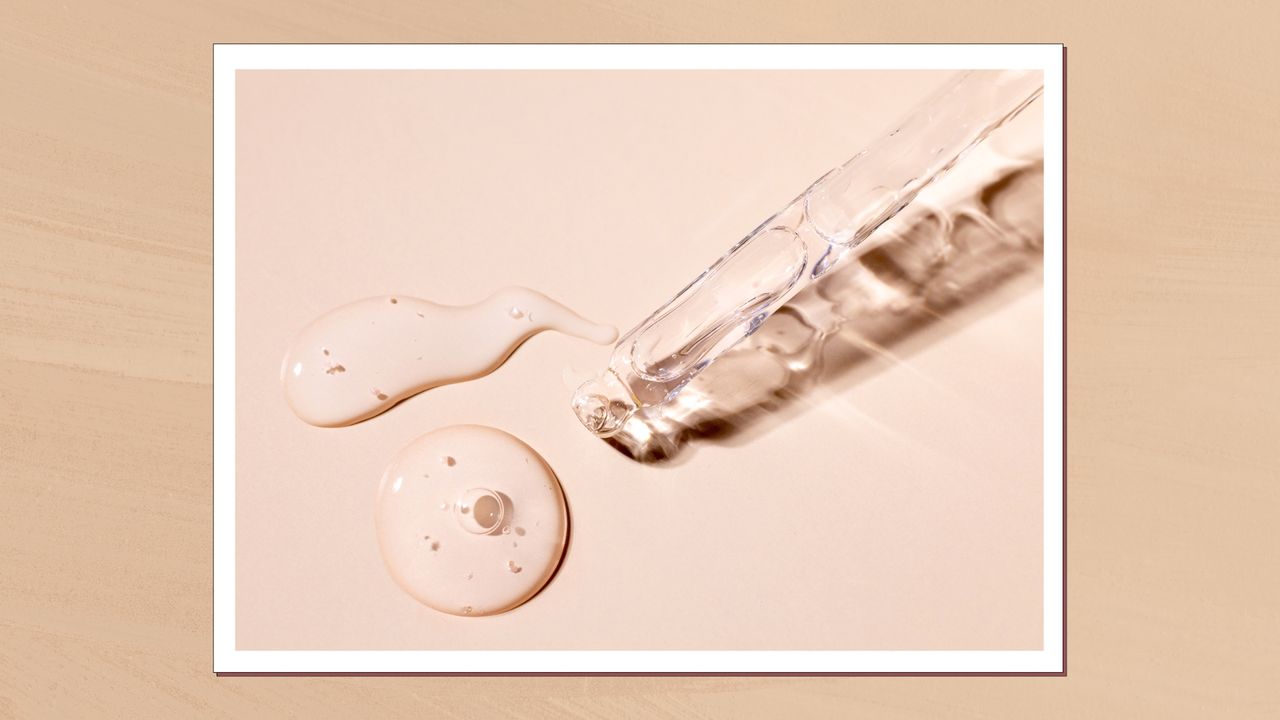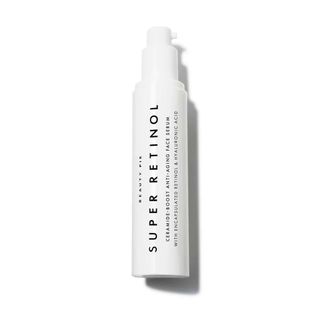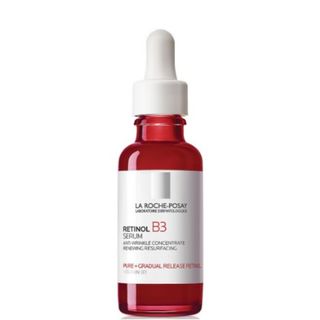How *not* to use retinol to achieve the best results and avoid irritation
We've quizzed the skincare experts on what application habits to avoid when using retinol products, to get the most from the active...


Unsure of the correct way to apply retinol to your skin? The experts weigh in on the dos and - most importantly - the don'ts when dabbling with the powerhouse ingredient...
Retinol is touted as a giant in the beauty space for its ability to exfoliate the skin, whilst also improving the overall texture and promoting collagen production. However, while this all sounds great, when it actually comes to incorporating one of the best retinol creams and serums into your routine, it's not as simple as just rubbing it on your face whenever you remember to. It's also not an ingredient that plays well with others - meaning you can't just throw it into the mix with all your other lotions and potions.
Understanding how not to use the ingredient is key to avoiding the negative side effects - like sensitivity - often associated with retinol and thus, we've enlisted the expertise of skincare pros, to lift the lid on retinol application...
How not to use retinol in your skincare routine
Unlike let's say the best hyaluronic acid serums; which are versatile and well-tolerated by most skin types, can be used both in your AM and PM routine and alongside ingredients like niacinamide and vitamin C, retinol is more high-maintenance.
There are several retinol mistakes to avoid, especially when it comes to application and we've asked the expert to outline exactly what they are...
1. Applying it on broken skin or around the eye
"When using retinol," says Dr Magnus Lynch, Consultant Dermatologist and Surgeon, "avoid applying it to irritated or broken skin." And, unless you're using a specifically designed retinol eye cream, you should also refrain from applying it around your delicate eye area.
Faye Purcell, Head of Research & Development at Q+A, reiterates this and adds: "Try and avoid any areas of thin and delicate skin, like the under eye, and do not apply retinol to dry or chapped skin or active breakouts." Purcell recommends opting for a gentle formulation, like Q+A Retinol 0.2% serum (at Face The Future).
Sign up for the woman&home newsletter
Sign up to our free daily email for the latest royal and entertainment news, interesting opinion, expert advice on styling and beauty trends, and no-nonsense guides to the health and wellness questions you want answered.
2. Applying it with other exfoliators
Retinol is an exfoliator in itself, therefore, Dr Lynch reminds us that, "it's best not to apply retinol before or after exfoliating treatments, as this can increase sensitivity."
The best salicylic acid products, for instance, should be avoided when using retinol products, to prevent irritation and as mentioned, skin sensitivity.
3. Applying it with other potent actives
Speaking of salicylic acid, Dr Lynch says to: "avoid using retinol with ingredients like benzoyl peroxide, salicylic acid and alpha hydroxy acids simultaneously, as they can cause excessive irritation and compromise the effectiveness of both products."
Dr Mahsa Saleki, Aesthetic doctor and founder of SAS Aesthetics seconds this and adds that combining these potent actives with retinol can, "increase the likelihood of skin irritation and dryness, which can reduce the effectiveness of both products. To maintain skin comfort and maximise the benefits of retinol, it's best to avoid using these ingredients together."
4. Applying high concentrations to soon and often
Whenever you buy a new skincare product there is the temptation to start using it straight away and as often as possible to start seeing the results ASAP, however when it comes to retinol, this is one of the worst things you can do.
As Advanced Facialist, Mariam Abbas explains: "The rule for retinol is always start low and go slow, it is all about acclimatising the skin to the
active and building tolerance for it." Abbas recommends starting with a low concentration and applying it twice a week - before then building up slowly but keeping an eye out on how your skin is reacting
5. Not taking care when applying
This goes for all skincare but is especially important to note when it comes to harsher products: be gentle with your skin.
When applying your retinol, Dr Saleki warns that moderation is key, as "using too much or too often can lead to dryness and irritation," and says to, "refrain from vigorous rubbing or massaging, as it can exacerbate skin sensitivity."
Be careful not to tug your skin and avoid using cotton pads with retinol, as they can drag along your skin. Instead, press the product into your face using your fingertips and palms. Dr Saleki also adds to avoid, "sensitive areas like the eyelids, nose corners, and mouth corners," when applying.
6. Not applying a hydrating moisturiser afterwards
Retinol is a very potent ingredient and thus, must be followed with a good quality moisturiser, to ward off dryness and irritation and to replenish your skin's barrier.
It's also crucial to chase your retinol products with one of the best face sunscreens as retinol can increase your skin's sensitivity to the sun.
7. Not applying is at night
Retinol should be applied as part of your night time routine because, as mentioned, it can increase your skin's sensitivity to the sun - meaning it's imperative to wear SPF after any retinol use.
8. Applying it to wet skin
Unlike hyaluronic acid serum, which should be applied to damp skin, Purcell warns to, "never apply retinol to wet skin as this can lead to an increased chance of irritation."
It should be applied to clean skin and followed with both a moisturiser and SPF, to prevent dryness and to protect it from UV rays.
Purcel also adds: "Don’t use retinol while pregnant or before any hair removal treatments, " and again reminds us to, "ALWAYS wear SPF every day after using retinol."
Our go-to retinol picks
Now we're all caught up on the dos and don'ts of applying retinol, if you're looking to add the ingredient to your routine, here are three top products we recommend...

RRP: £19 for members/£75 for non-members
This gentle Encapsulated Retinol serum features lactic and hyaluronic acids to both brighten, hydrate and smooth the skin - reducing the appearance of fine lines, whilst the inclusive of ceramides helps to repair the skin's barrier.

Naomi is a Digital Beauty Writer at woman&home, where she covers everything from makeup to skincare but specialises, particularly, in fragrance and nail trends. Through her work, Naomi shares her trend expertise and personal product recommendations. She is also a judge for woman&home's annual hair, skincare and beauty awards.
Previously, she worked as a Lifestyle News Writer for My Imperfect Life magazine, where she used her savvy for TikTok to bring readers the latest beauty buzzwords, fashion movements and must-have products.
Before that, Naomi split her time between both GoodTo and My Imperfect Life, whilst training for her Gold Standard diploma in Journalism with the NCTJ, for which she earned a Distinction. Interestingly though, Naomi actually has a background in design, having studied Illustration at Plymouth University but leapt into the media world in 2020, to pursue her passion for writing. Now, when she isn’t reporting on the best perfumes and latest beauty releases, you can find her drinking copious cups of coffee and probably online shopping...
-
 Caught ending explained: Who was the killer and is Leo dead?
Caught ending explained: Who was the killer and is Leo dead?Another Harlan Coben thriller is riding high on Netflix, and viewers are asking for a deep dive of the intense ending of Caught
By Lucy Wigley Published
-
 Chocolate brown is everywhere but Ranvir Singh's Reiss sale dress stands out from the crowd
Chocolate brown is everywhere but Ranvir Singh's Reiss sale dress stands out from the crowdRanvir Singh has made us fall in love with deep cocoa brown all over again and her Reiss midi dress is more than 50% off
By Emma Shacklock Published

